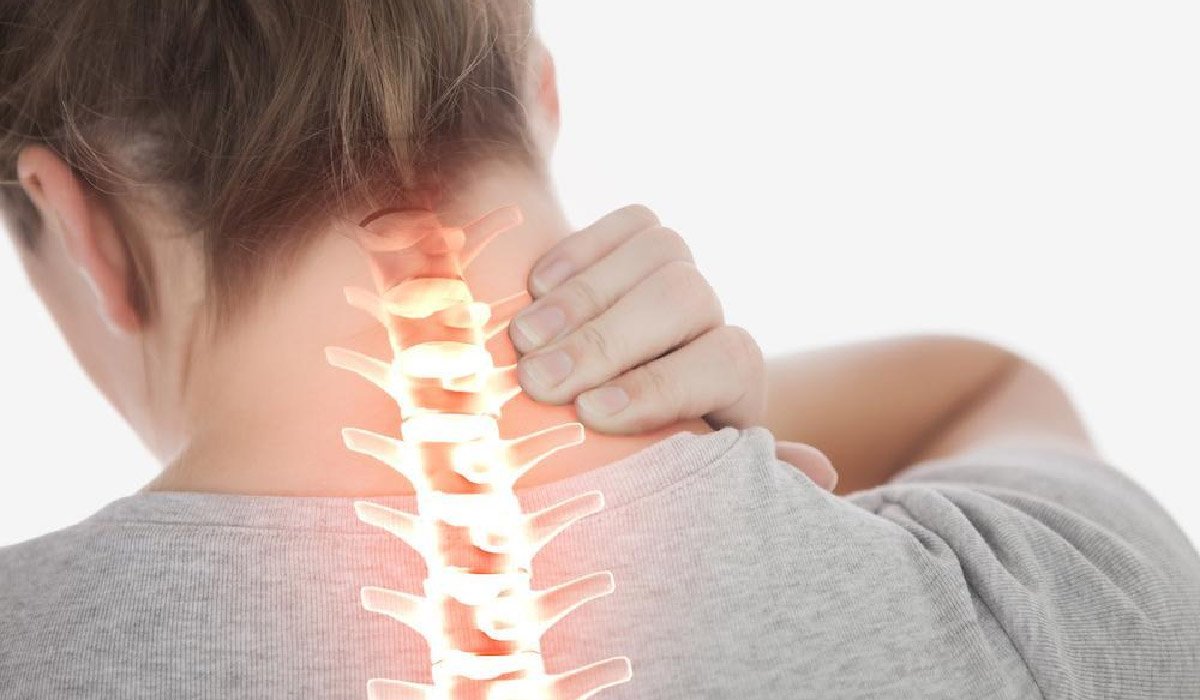Blog
Inomyalgia Explained: Powerful Relief Guide for Muscle Pain Sufferers

What Is Inomyalgia?
Inomyalgia is a term that is gaining increasing attention in the realm of chronic pain disorders. At its core, inomyalgia refers to persistent and widespread muscle pain that is not linked to direct injury or overuse, but rather to deeper physiological and lifestyle factors. While muscle aches are common and often temporary, inomyalgia describes a much more complex and long-lasting condition that can affect multiple parts of the body simultaneously.
Unlike ordinary soreness that follows physical activity, inomyalgia can linger for weeks or months, making daily activities challenging and reducing overall quality of life. This condition is now being discussed more frequently in medical and wellness circles, as awareness grows about its debilitating nature and the necessity for better understanding and treatment. Individuals who live with inomyalgia often struggle not only with pain, but also with emotional and mental fatigue due to being misunderstood or misdiagnosed.
This article will explore all aspects of inomyalgia—including its causes, symptoms, diagnosis, treatments, mental health impact, and strategies for long-term management—to provide a thorough and practical resource for anyone seeking clarity on this condition.
Understanding Inomyalgia
Definition and Meaning
The word “inomyalgia” is derived from the combination of “ino” (relating to muscle fibers) and “myalgia” (meaning muscle pain), effectively translating to “pain in muscle fibers.” However, inomyalgia is more than just a descriptive term—it reflects a medical challenge characterized by muscle discomfort that does not heal with rest or simple interventions. This pain is persistent, often shifting across muscle groups and sometimes accompanied by stiffness, fatigue, and hypersensitivity.
The condition is frequently mistaken for common myalgia or dismissed as a side effect of stress, but those living with inomyalgia know that its effects can be severe and limiting. Its chronic nature and unclear origin make it a particularly distressing condition for patients, especially when they struggle to receive an accurate diagnosis or support.
Inomyalgia vs. Fibromyalgia vs. Myalgia
Understanding how inomyalgia compares to similar conditions is essential for clarity and treatment planning. Below is a comparative table:
| Condition | Key Symptoms | Trigger Factors | Diagnostic Recognition | Neurological Involvement |
|---|---|---|---|---|
| Inomyalgia | Muscle pain, fatigue, stiffness | Stress, posture, deficiencies | Emerging; not yet standardized | Mild to moderate |
| Fibromyalgia | Widespread pain, brain fog, IBS | Nervous system hypersensitivity | Widely recognized by doctors | Strong neurological link |
| Myalgia | Localized muscle soreness | Injury, infection, overuse | Common and well understood | Minimal |
While all three conditions involve muscle pain, fibromyalgia includes more neurological symptoms and is officially recognized by most health systems. Inomyalgia, on the other hand, remains a term in evolution—recognized in chronic pain forums and some medical circles, but still emerging in broader clinical guidelines.
Causes of Inomyalgia – What Triggers It?
Common Physiological Causes
Inomyalgia can arise from a variety of physical triggers that accumulate over time. One of the most overlooked causes is poor posture, particularly in individuals who work at desks or use mobile devices for long hours. Improper posture can lead to chronic strain in the neck, shoulders, and back, which eventually results in pain that spreads across the body. Muscle overuse is another key trigger, particularly when physical exertion is not balanced with adequate rest or stretching.
Viral infections such as the flu, COVID-19, or Epstein-Barr virus may also contribute by triggering systemic inflammation or altering immune responses. Hormonal imbalances, especially involving cortisol and serotonin, have been linked to heightened pain sensitivity, which can lead to prolonged muscular discomfort that characterizes inomyalgia.
Psychological and Lifestyle Triggers
Mental health and lifestyle play an equally important role in the development and persistence of inomyalgia. Chronic stress and anxiety cause the body to remain in a prolonged state of tension, which prevents muscles from fully relaxing. Over time, this can lead to soreness, stiffness, and chronic pain. Sleep deprivation is another major factor—when the body doesn’t get enough restorative sleep, muscle tissue doesn’t regenerate properly, and pain perception increases.
A sedentary lifestyle weakens muscles and leads to poor circulation, further exacerbating discomfort. Nutritional deficiencies, particularly low levels of Vitamin D, Vitamin B12, and magnesium, are often found in people with chronic muscle pain. These nutrients are critical for muscle function and nervous system health, making their deficiency a key contributing factor in inomyalgia.
Genetic & Environmental Factors
Some individuals may be genetically predisposed to develop inomyalgia, especially if they have a family history of chronic pain conditions. Environmental stressors also play a critical role. Repeated exposure to cold or damp environments can trigger muscle tension and pain. Occupational hazards—such as jobs that involve repetitive motion, prolonged sitting, or physically demanding tasks—can lead to cumulative trauma that manifests as chronic muscle discomfort. These triggers may seem minor in isolation but can result in persistent pain when combined or left unaddressed.
Symptoms of Inomyalgia – How It Manifests
Core Physical Symptoms
The most defining symptom of inomyalgia is persistent and widespread muscle pain. This discomfort may present as aching, throbbing, burning, or cramping, and it can shift from one area of the body to another. Many patients report morning stiffness, where muscles feel tight and movement is difficult upon waking. Certain “tender points”—areas that are particularly sensitive to touch—may develop, making it painful to perform even basic activities like sitting, walking, or lifting. These symptoms are often resistant to common pain relievers, requiring a more comprehensive management approach.
Mental and Emotional Effects
Inomyalgia does not only affect the muscles; it also has a profound impact on mental and emotional well-being. Chronic fatigue is a common complaint, with patients feeling drained of energy regardless of how much they rest. This is often compounded by “brain fog,” a term used to describe difficulty focusing, forgetfulness, and slow mental processing. These cognitive challenges can make work, conversation, and decision-making more difficult. Many individuals also experience mood disturbances such as anxiety and depression, which are often the result of living with daily, unrelenting pain and the frustration of feeling misunderstood or invalidated.
Functional Impairment
Over time, inomyalgia can significantly reduce a person’s ability to function normally. Tasks that once seemed routine—such as grocery shopping, exercising, or attending social events—become exhausting or impossible. Work productivity may suffer, and relationships can become strained. Individuals often feel isolated, as the invisible nature of their condition leads others to underestimate the severity of their pain. These functional limitations are one of the most damaging aspects of inomyalgia, underscoring the need for both physical and psychological support.
Diagnosis of Inomyalgia – How Doctors Identify It
Clinical Examination Process
Diagnosing inomyalgia is not straightforward, primarily because it lacks a definitive diagnostic test. Physicians typically begin with a detailed patient history, documenting the duration, frequency, and nature of the pain. Patients may also be asked to keep a symptom diary to help identify triggers and patterns. During a physical examination, doctors assess muscle stiffness, tenderness, and pain response at specific points on the body. The process is thorough but often requires time and patience to ensure accurate assessment.
Rule-Out Testing
Because many other conditions share similar symptoms with inomyalgia, doctors must first exclude other possible causes. Blood tests may be used to check for autoimmune conditions like lupus or rheumatoid arthritis, as well as to measure thyroid function and vitamin levels. Imaging tests like MRIs or X-rays can help detect injuries, tumors, or degenerative diseases. Only after these potential causes are ruled out can a working diagnosis of inomyalgia be made, based on clinical criteria and patient history.
Diagnostic Challenges
One of the main obstacles to proper diagnosis is the lack of universally accepted criteria for inomyalgia, as the term itself is still emerging in mainstream medical literature. As a result, many patients are misdiagnosed or told their symptoms are psychosomatic. This not only delays effective treatment but also adds emotional stress to those already suffering. Awareness among healthcare providers is gradually improving, but more education and research are needed to establish clearer diagnostic standards.
Treatment Options for Inomyalgia – From Relief to Recovery
Effectively treating inomyalgia requires a multidimensional approach that targets both physical symptoms and the underlying contributors to chronic pain. Since there is no universal cure, the main goal of treatment is to alleviate discomfort, enhance mobility, and restore overall well-being. Medical treatments often include over-the-counter pain relievers like ibuprofen or acetaminophen for temporary relief, though these are not always sufficient for chronic cases. Doctors may prescribe low-dose antidepressants such as amitriptyline or duloxetine, which not only help regulate pain perception but also improve sleep quality and mood.
In more severe cases, neuromodulators like pregabalin and gabapentin may be recommended to calm overactive nerves and reduce the intensity of pain signals. However, medication alone is rarely enough. Physical therapy plays a crucial role in recovery, as it introduces patients to targeted exercises, stretching, and strengthening routines that help prevent muscle stiffness and promote circulation. Bodywork therapies such as massage and myofascial release can also provide relief by reducing muscle tension and improving flexibility.
For individuals who prefer holistic strategies, mind-body techniques such as yoga, tai chi, breathing exercises, and meditation have proven effective in managing chronic pain and improving emotional resilience. Cognitive Behavioral Therapy (CBT) is another powerful tool, especially when pain leads to anxiety, depression, or a negative mindset. Nutritional support is equally vital, as deficiencies in Vitamin D, magnesium, and omega-3 fatty acids have been linked to increased pain sensitivity.
Adopting an anti-inflammatory diet rich in leafy greens, berries, whole grains, and healthy fats can support muscle health, reduce inflammation, and improve energy levels. Ultimately, managing inomyalgia successfully requires an individualized plan that may combine conventional medicine, lifestyle interventions, and alternative therapies based on the person’s unique symptoms and preferences.
Living with Inomyalgia – Coping Strategies That Work
Living with inomyalgia is a daily challenge that requires more than just medical treatment—it calls for practical coping strategies that enhance one’s quality of life and promote self-compassion. One of the most important principles in managing life with inomyalgia is activity pacing, which means balancing periods of exertion with ample rest to avoid triggering flare-ups. Pushing too hard on a “good day” can often lead to days of increased pain and fatigue, so it’s important to create routines that prioritize steady, manageable activity.
Energy conservation techniques, such as breaking tasks into smaller steps, sitting while cooking, or using assistive devices, help reduce physical strain throughout the day. Another key area is the ergonomic setup of home and work environments; using supportive furniture, adjusting screen height, and taking regular movement breaks can make a dramatic difference in muscle tension. Emotional and social support are just as critical.
People with inomyalgia often feel isolated due to the invisible nature of their condition, so surrounding oneself with empathetic friends, family, or support groups (both online and offline) can provide validation, encouragement, and shared strategies. Journaling is another helpful tool—it allows individuals to track pain patterns, identify triggers, and communicate symptoms more clearly with healthcare providers.
Developing consistent self-care routines is essential for managing stress, improving sleep, and nurturing emotional health. This can include winding down with calming music, taking warm baths, practicing mindfulness, or simply setting boundaries to avoid burnout. Self-compassion is vital; learning to say no, resting without guilt, and recognizing personal limits are powerful forms of healing. Inomyalgia may change the pace and structure of life, but with the right tools, individuals can still live fulfilling, meaningful, and empowered lives.
Preventive Measures – How to Minimize Risk or Relapse
While inomyalgia may not always be preventable, adopting key lifestyle habits can significantly reduce the risk of developing or worsening this chronic condition. One of the most powerful preventive strategies is maintaining regular, moderate physical activity. Gentle, low-impact exercises like walking, swimming, stretching, or yoga help keep muscles flexible, improve circulation, and reduce inflammation.
It’s important not to overdo it—overexertion can trigger flare-ups—but regular movement helps prevent muscle deconditioning and stiffness. Practicing good posture throughout the day, especially during computer work, phone use, or driving, can prevent muscular strain that leads to chronic discomfort. Using ergonomic tools like lumbar pillows or standing desks can also promote better body alignment. Another essential aspect is sleep hygiene.
Developing consistent sleep routines, avoiding screens before bedtime, and creating a relaxing sleep environment supports muscular repair and reduces fatigue. Nutrition also plays a significant role in prevention. A balanced diet with adequate levels of magnesium, potassium, and vitamin D helps support neuromuscular function, while avoiding processed foods, excess sugar, and caffeine can lower inflammation and reduce symptom intensity.
Stress management is another cornerstone of prevention—chronic stress tightens muscles, elevates cortisol, and reduces the body’s ability to recover. Incorporating mindfulness techniques such as meditation, journaling, or nature walks into daily life helps calm the nervous system and improve resilience.
Finally, regular health check-ups are important, as early detection of hormonal imbalances, autoimmune conditions, or nutritional deficiencies can help address problems before they evolve into chronic pain syndromes. Preventing inomyalgia is about holistic health—maintaining balance across physical, mental, and emotional dimensions.
Inomyalgia and Mental Health – The Emotional Toll
The emotional and psychological burden of inomyalgia is often as profound as the physical pain, yet it is frequently overlooked in both diagnosis and treatment. Chronic pain conditions like inomyalgia can significantly impact a person’s mental health, often leading to feelings of helplessness, frustration, and isolation. Many patients experience anxiety and depression, not just as a reaction to the pain but as a result of systemic changes in neurotransmitter levels caused by persistent inflammation and disrupted sleep.
Living with invisible symptoms often causes emotional strain, especially when others—family, friends, or even doctors—fail to understand or validate the severity of the condition. This can lead to emotional exhaustion, low self-esteem, and a sense of disconnection from others. The mental health impact can also create a vicious cycle, where emotional stress amplifies pain, and pain deepens emotional distress. Fortunately, there are effective coping mechanisms.
Professional counseling or psychotherapy, particularly Cognitive Behavioral Therapy (CBT), has shown strong benefits for people managing chronic pain. It helps patients reframe negative thoughts, build coping strategies, and regain a sense of control over their lives. Mindfulness-Based Stress Reduction (MBSR) is another research-supported tool that teaches present-moment awareness and acceptance, which can lessen the emotional reactivity to pain.
Engaging in creative outlets such as writing, art, or music can also provide an emotional release and enhance mood. Importantly, social connection is a powerful antidote to the mental toll of chronic illness—joining support groups, talking to empathetic friends, or participating in community activities can reduce feelings of loneliness. Addressing mental health isn’t optional when treating inomyalgia—it is a central pillar in helping patients reclaim their well-being and rebuild hope for the future.
Future Research and Hope – What’s on the Horizon?
While inomyalgia is still an emerging diagnosis, there is a growing body of research aimed at better understanding its biological basis, diagnostic markers, and treatment innovations. Scientists are exploring brain imaging technologies, such as functional MRI, to observe how chronic pain conditions alter the brain’s response to stimuli. This research is shedding light on how individuals with inomyalgia process pain differently, often experiencing amplified pain signals due to central sensitization.
Genetic studies are also underway to identify biomarkers that might explain why some people are more prone to chronic muscle pain than others. There’s increasing interest in the gut-muscle-brain axis, a complex communication network where digestive health, mental health, and muscular function all influence each other. This opens new doors for treatments involving probiotics, anti-inflammatory diets, and microbiome therapy.
Additionally, AI-powered health trackers and wearables are being developed to help patients monitor pain levels, activity patterns, and symptom flare-ups in real time, offering personalized insights and earlier intervention. Promising drug therapies, including biologics and neuromodulators, are also being tested for their ability to reduce muscle inflammation and nerve sensitivity with fewer side effects. In the realm of digital health, mobile apps for pain tracking, virtual physiotherapy, and guided meditations are becoming more accessible and effective.
Though inomyalgia may not yet have a definitive cure, the pace of research offers real hope. With increasing recognition, better diagnostic frameworks, and emerging therapies, the future for those living with inomyalgia is becoming brighter.
When to See a Doctor – Warning Signs Not to Ignore
While mild muscle soreness is common and often harmless, there are situations where persistent pain may signal something more serious like inomyalgia. Individuals should consider consulting a doctor if they experience ongoing muscle pain that lasts more than two to three weeks, especially when it interferes with daily life. Sudden and severe pain without an apparent injury should also be evaluated immediately.
Other red flags include pain accompanied by fever, swelling, redness, or unexplained weight loss, which could indicate an infection or autoimmune disorder. If the discomfort is paired with severe fatigue, sleep disturbances, or mood changes, it’s essential to seek professional help, as these could point to a broader systemic issue. Early diagnosis not only helps prevent the condition from worsening but also opens the door to effective treatments and lifestyle adjustments. Trusting your body’s signals and acting on persistent pain is the first step toward recovery and resilience.
Conclusion
Inomyalgia is more than a physical ailment—it’s a chronic, complex condition that affects every dimension of a person’s life. From persistent muscle pain to emotional fatigue, from disrupted routines to misunderstood symptoms, those living with inomyalgia often navigate an invisible but deeply impactful journey. However, knowledge is power. Understanding the causes, symptoms, and diagnostic process can empower individuals to seek proper care and advocate for themselves.
Through a combination of medical treatment, lifestyle changes, emotional support, and preventive strategies, the burden of inomyalgia can be significantly reduced. Most importantly, individuals must remember that they are not alone—millions silently suffer from similar pain, and with growing research, advocacy, and awareness, support is expanding every day. The road may be long, but with compassion, science, and proactive care, a better quality of life is not only possible—it’s within reach.
FAQs About Inomyalgia
1. What is inomyalgia in simple words?
Inomyalgia is a condition that causes long-lasting muscle pain and stiffness. It is different from regular soreness because the pain doesn’t go away with rest and can affect many parts of the body.
2. What causes inomyalgia?
Inomyalgia can be caused by poor posture, stress, lack of sleep, vitamin deficiencies, or past infections. It can also run in families or be triggered by emotional and physical strain.
3. What are the symptoms of inomyalgia?
Common symptoms of inomyalgia include muscle pain, tiredness, brain fog, stiffness, and trouble sleeping. Some people also feel anxious or depressed because of the ongoing pain.
4. How is inomyalgia diagnosed?
Doctors diagnose inomyalgia by checking your symptoms, doing a physical exam, and ruling out other problems like arthritis or thyroid issues. There is no single test, so patient history is very important.
5. Can inomyalgia be cured?
There is no full cure for inomyalgia, but it can be managed. Treatment includes gentle exercise, good sleep, stress control, healthy food, and sometimes medication to ease the pain and help with sleep.
For More Information Visit Coopermagazine
-

 Celebrity1 year ago
Celebrity1 year agoWho Is Jennifer Rauchet?: All You Need To Know About Pete Hegseth’s Wife
-

 Celebrity1 year ago
Celebrity1 year agoWho Is Mindy Jennings?: All You Need To Know About Ken Jennings Wife
-

 Celebrity1 year ago
Celebrity1 year agoWho Is Enrica Cenzatti?: The Untold Story of Andrea Bocelli’s Ex-Wife
-

 Celebrity1 year ago
Celebrity1 year agoWho Is Klarissa Munz: The Untold Story of Freddie Highmore’s Wife
















